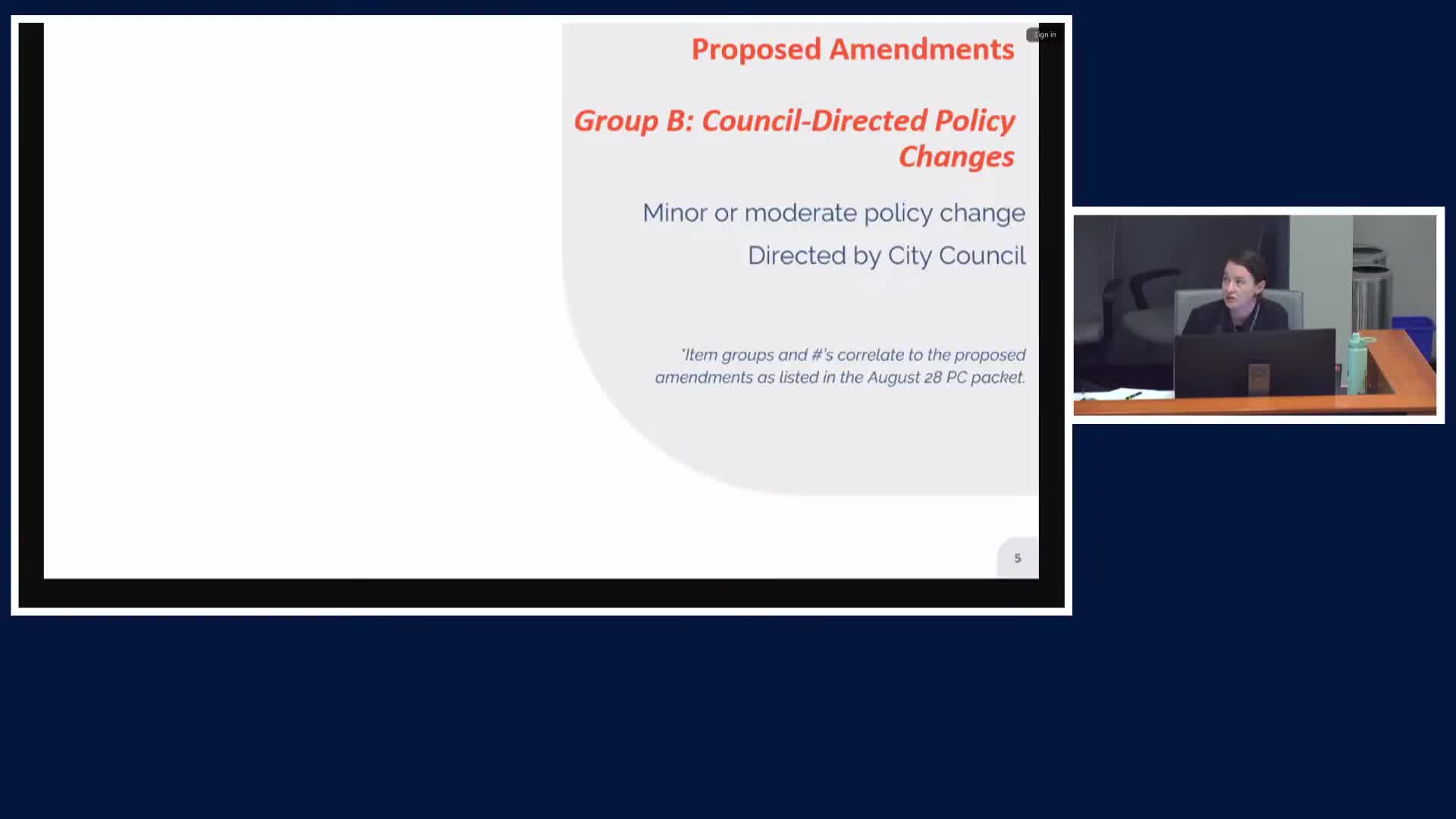Council Proposes 70% Exemption Increase for Artificial Turf in Lot Coverage Regulations
August 29, 2025 | Kirkland, King County, Washington
This article was created by AI summarizing key points discussed. AI makes mistakes, so for full details and context, please refer to the video of the full meeting. Please report any errors so we can fix them. Report an error »

The Kirkland Planning Commission convened on August 28, 2025, to discuss a significant amendment regarding the use of artificial turf in residential areas. The primary focus of the meeting was a proposed change to the regulations governing how artificial turf contributes to maximum lot coverage on residential properties.
Currently, artificial turf is classified as a partially exempt material, meaning that only 50% of its area counts towards the maximum lot coverage limit of 50% for low-density residential zones. The proposed amendment seeks to increase this exemption percentage from 50% to 70%. This change aims to provide homeowners with greater flexibility in landscaping options while still adhering to the city's zoning regulations.
During the meeting, city staff presented a diagram illustrating how lot coverage is calculated, highlighting the distinction between fully exempt materials, such as building footprints and driveways, and partially exempt materials like pavers and turf. For instance, if a property has 416 square feet of artificial turf, only 208 square feet currently counts towards the lot coverage limit. Under the new proposal, this would increase, allowing more turf to be installed without exceeding the coverage cap.
The Planning Commission also emphasized the importance of ensuring that any changes to turf regulations do not conflict with existing environmental protections, such as the tree code and critical areas ordinance. To address these concerns, the draft amendment includes a provision reminding users to consider these regulations when planning landscaping projects.
In conclusion, the proposed amendment to increase the exemption for artificial turf is a response to the growing demand for flexible landscaping solutions in Kirkland. As the city continues to balance development with environmental stewardship, the Planning Commission's discussions reflect a commitment to thoughtful urban planning. The next steps will involve further review and potential adoption of the code amendment, which could significantly impact residential landscaping practices in the community.
Currently, artificial turf is classified as a partially exempt material, meaning that only 50% of its area counts towards the maximum lot coverage limit of 50% for low-density residential zones. The proposed amendment seeks to increase this exemption percentage from 50% to 70%. This change aims to provide homeowners with greater flexibility in landscaping options while still adhering to the city's zoning regulations.
During the meeting, city staff presented a diagram illustrating how lot coverage is calculated, highlighting the distinction between fully exempt materials, such as building footprints and driveways, and partially exempt materials like pavers and turf. For instance, if a property has 416 square feet of artificial turf, only 208 square feet currently counts towards the lot coverage limit. Under the new proposal, this would increase, allowing more turf to be installed without exceeding the coverage cap.
The Planning Commission also emphasized the importance of ensuring that any changes to turf regulations do not conflict with existing environmental protections, such as the tree code and critical areas ordinance. To address these concerns, the draft amendment includes a provision reminding users to consider these regulations when planning landscaping projects.
In conclusion, the proposed amendment to increase the exemption for artificial turf is a response to the growing demand for flexible landscaping solutions in Kirkland. As the city continues to balance development with environmental stewardship, the Planning Commission's discussions reflect a commitment to thoughtful urban planning. The next steps will involve further review and potential adoption of the code amendment, which could significantly impact residential landscaping practices in the community.
View full meeting
This article is based on a recent meeting—watch the full video and explore the complete transcript for deeper insights into the discussion.
View full meeting
